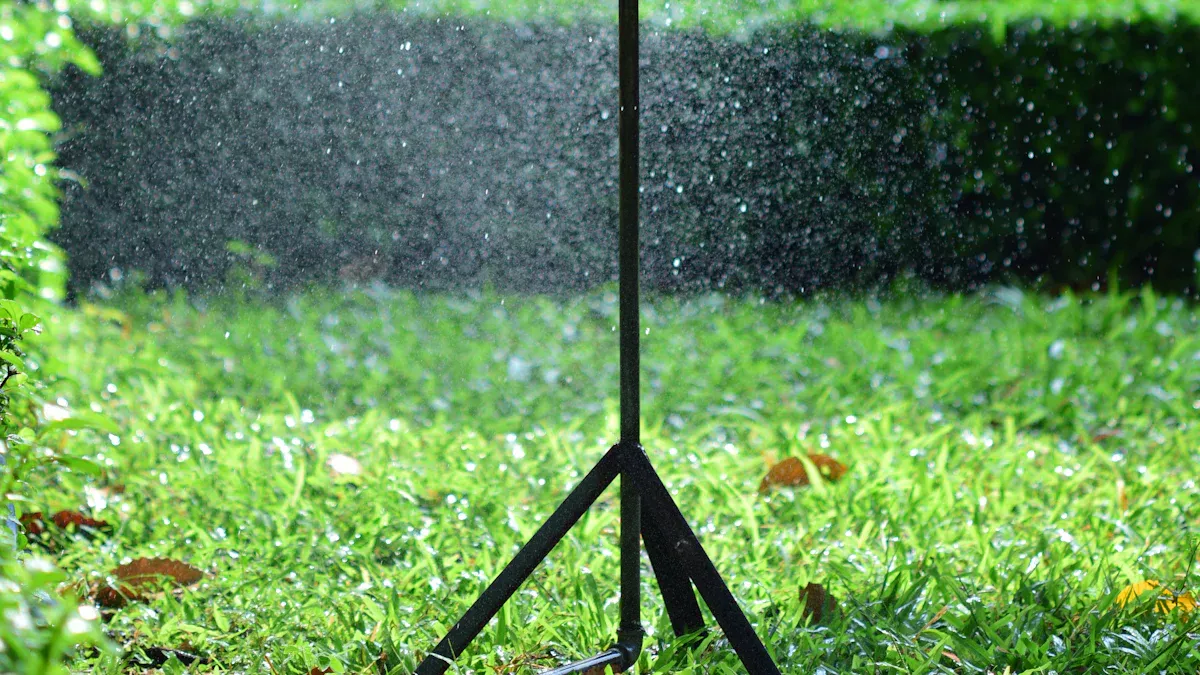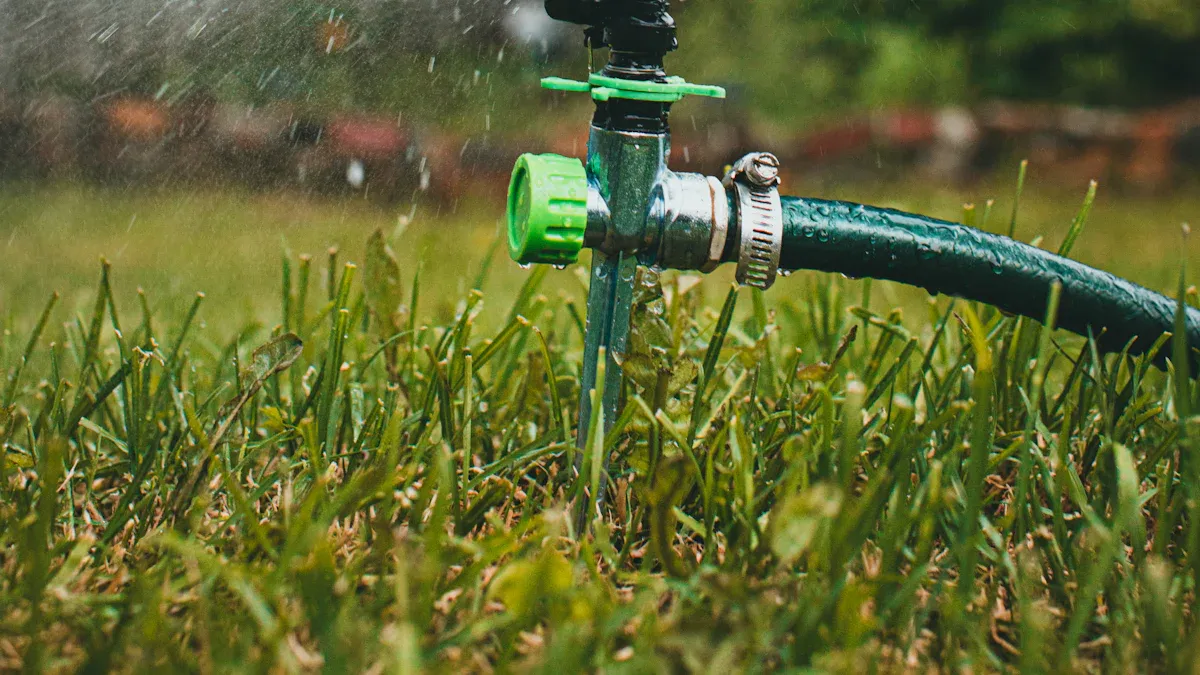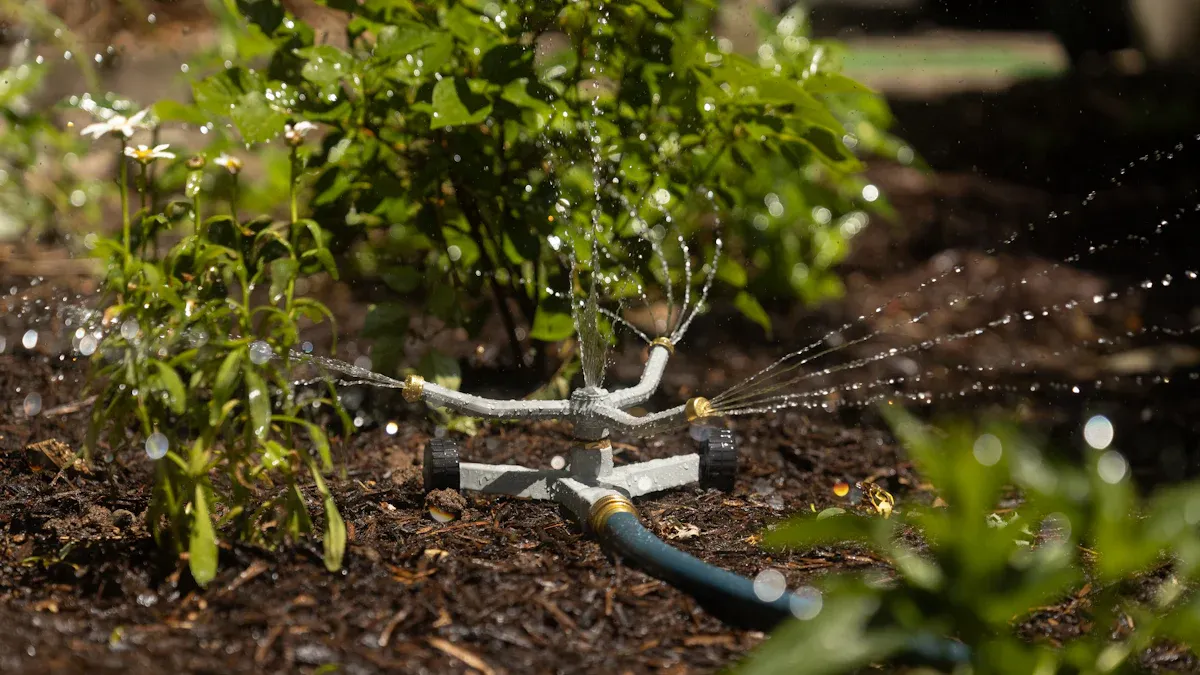
Water shortages are no longer a far-off problem; they are real and changing how we take care of gardens. You might have noticed hotter weather and less rain. Experts say droughts are happening more often, especially in the southwest U.S. This makes it harder to keep gardens healthy. Hotter days also cause water to dry up faster, leaving less for plants when they need it most.
But don’t worry—your garden can still thrive. By implementing low-water gardening tips, you can conserve water and keep your garden flourishing, even in tough times. Want to know some easy water-saving techniques for gardening? Let’s get started!
Select Water-Saving Plants

Saving water starts with picking the right plants. Some need less water, so your garden stays pretty without wasting it. Here are two smart ways to choose water-saving plants.
Pick Drought-Tolerant Plants
Drought-tolerant plants are like garden heroes. They survive with little water, which is great for dry areas. These plants have cool features, like deep roots to find underground water or waxy leaves to keep moisture. Examples include succulents, lavender, and rosemary. They save water and make your garden look amazing for outdoor water use.
By 2025, more people will use drought-tolerant landscaping. Why? It saves water and creates a garden that thrives in dry weather. Low-water gardens can use 75% less water than grass lawns. That’s a big deal! Plus, these plants need less care, so you’ll have more time to relax and enjoy your garden.
Use Native Plants for Easy Watering
Native plants are perfect for your area. They’ve adapted to the local weather and soil, so they need less water and care. Planting native plants also helps bees and butterflies. For example, in the southwest U.S., try desert marigolds or California poppies. These plants love dry weather and need little watering.
Experts suggest replacing grass with native wildflowers. Why? Native plants save water and help local animals. This makes your garden healthy and full of life. It’s good for you and the planet.
Tip: Group native plants together. This way, watering is easier since they need the same amount.
By using drought-tolerant and native plants, your garden will be beautiful and save water. It’s a simple way to help as water becomes harder to find.
Enhance Soil for Water Retention
If you want your garden to hold onto water longer, improving the soil is key. Healthy soil acts like a sponge, soaking up water and keeping it available for your plants. Here’s how you can make your soil better at retaining water.
Use Organic Matter to Improve Soil Health
Adding organic matter, like compost, is one of the best ways to improve your soil. Compost enriches the soil with nutrients and helps it hold more water. Think of it as giving your garden a natural boost. When you mix compost into your soil, it creates a structure that traps water and keeps it from draining away too quickly.
Did you know? A silt loam with 4% organic matter can hold more than twice the water compared to one with just 1%. That’s a huge difference! By increasing organic matter, you’re not only improving water retention but also boosting the overall health of your soil.
To get started, add a layer of compost to your garden beds and mix it into the top few inches of soil. You can also use kitchen scraps, like vegetable peels or coffee grounds, to make your own compost. Over time, this will create rich, water-holding soil that your plants will love.
Apply Mulch to Conserve Moisture
Mulch is like a protective blanket for your soil. It keeps the moisture in and prevents it from evaporating too quickly. Plus, it helps regulate soil temperature, which is especially important during hot summer days. By adding mulch, you’re giving your garden a simple but effective way to save water.
Here’s how mulch works: It covers the soil, reducing the amount of water lost to evaporation. It also prevents weeds from growing, which means less competition for water. Organic mulches, like wood chips or straw, break down over time and add even more organic matter to your soil.
Gardens with higher water-holding capacity (40.8% WHC) need less frequent watering compared to those with lower capacity (20.2% WHC).
Mulched soil stays moist longer, so you won’t have to water as often.
After watering, soil with good water retention reaches maximum moisture levels within two hours, making it more efficient for your plants.
To apply mulch, spread a 2-3 inch layer around your plants, making sure not to pile it against the stems. This will keep the soil moist and your plants happy. Remember to check the mulch regularly and replace it as needed to maintain its effectiveness.
By improving your soil with compost and protecting it with mulch, you’ll create a garden that holds onto water and thrives, even during dry spells. These simple steps can make a big difference in conserving water and keeping your plants healthy.
Optimize Watering Practices
Watering correctly helps save water and keeps plants healthy. Changing how and when you water makes a big difference.
Water Early or Late to Reduce Evaporation
Watering early morning or late evening works best. Cooler times mean less water evaporates, so roots get more. Watering midday wastes water because heat dries it fast.
Studies show watering at 10:00 am dries in 35 minutes. Watering at 8:00 pm dries in 50 minutes. Early or late watering gives plants more time to absorb water. It also stops water from being wasted.
Tip: Use soaker hoses for early or late watering. They send water straight to the soil, saving even more.
Use Drip Irrigation for Precise Watering
Drip irrigation is great for small gardens. It sends water directly to plants. This avoids wasting water on paths or empty spaces. It’s simple, efficient, and saves lots of water.
Drip irrigation is growing popular. The market may grow from $7.31 billion in 2024 to $8.16 billion in 2025. Why? It saves up to 60% more water than regular watering. It also cuts evaporation and runoff, saving 30%-50% overall.
Combine drip irrigation with soaker hoses for better results. Together, they make a smart watering system that saves water and keeps gardens thriving.
Watering at cooler times and using drip irrigation helps gardens use less water. These small changes save money and help the planet.
Reuse and Collect Water

Water is valuable, so reusing or collecting it helps a lot. Here are two simple ways to save water and keep your garden healthy.
Use Rain Barrels to Collect Rainwater
Rain barrels are great for saving rainwater for your garden. Place them under gutters to catch water when it rains. This gives you free water for your plants and reduces the need for tap water.
Rain barrels also help your neighborhood. They lower stormwater runoff, which can cause flooding and pollution. Check out these benefits:
Evidence | Benefits |
|---|---|
Collecting rainwater lowers stormwater runoff and helps storm systems. | Prevents flooding and damage. |
Large-scale rainwater collection works better than older systems. | Reduces water pollution. |
Using rainwater for gardens cuts municipal water use. | Saves energy and lowers emissions. |
Rain cisterns store water for dry times, reducing treated water use. | Helps with water shortages. |
Setting up a rain barrel is easy. Pick one with a spout, and place it under a gutter. Use the water for your plants or a rain garden—it’s an effective water storage option that helps you prepare for dry spells. It’s a simple way to save rainwater and help the environment.
Recycle Household Water for Plants
Don’t waste all the water from your home. Reusing water is another easy way to save. For example, collect water from washing fruits or leftover pasta water. Just make sure it doesn’t have soap or chemicals.
Gray water systems are becoming popular. These systems reuse water from sinks, showers, or washers. They’re perfect for watering non-food plants and can lower your water bill. If a system feels too big, start small. Save water in a bucket and use it for your plants.
Reusing household water saves resources and keeps your garden watered. It’s good for you and the planet.
Plan a Water-Smart Garden Layout
Making a water-smart garden layout helps save water. By arranging plants wisely and using helpful tools, your garden can stay healthy and use less water.
Group Plants with Similar Water Needs
Put plants needing the same water together. This makes watering easier and avoids wasting water. For example, drought-friendly plants like succulents and lavender can share space. Thirsty plants like tomatoes should be grouped separately.
Here’s what studies say about this method:
Findings | Benefits |
|---|---|
Watering based on daily needs cuts irrigation by 30%-80% | Saves water and reduces nutrient loss |
Grouping plants also helps them grow better. When they don’t fight for water, they grow stronger. You’ll also avoid problems like overwatering or underwatering.
Tip: Use signs or tags to mark plant groups. This helps you remember their water needs.
Try Water-Saving Containers and Raised Beds
Water-saving containers and raised beds are great for saving water. Containers let you control how much water each plant gets. Raised beds drain well and lose less water to evaporation. Both help you use water wisely.
Here’s why these methods work:
Mulch stops water from evaporating, so you need less water.
A 1-2 inch mulch layer keeps soil moist and blocks weeds.
Straw or shredded paper works well in veggie gardens to save water.
Raised beds work well with drip irrigation systems. Research shows drip irrigation saves 28,000-38,000 acre-feet of water yearly for crops like citrus. Think about how much water you can save in your garden!
To begin, pick containers with good drainage and use soil that holds water. For raised beds, add mulch to keep soil wet and stop evaporation. These easy steps will help your garden grow while saving water.
You now have 10 easy ways to save water and grow a sustainable garden. From picking low-water plants to reusing home water, each step helps. Small actions can make a big impact. For instance, over 40% of water-heavy households are already trying to save water, and more people are learning about water conservation (M = 76.6 ± 16.5).
By using these small garden sustainable watering methods, you’re not just helping your garden grow—you’re actively contributing to larger water conservation efforts worldwide. So, don’t wait! Start now and turn your garden into a water-smart space! 🌱
FAQ
How do I start saving water in my garden?
Start by planting drought-friendly plants and adding compost or mulch. These steps help the soil hold water longer, so you water less. Small efforts like these can save a lot of water.
Are rain barrels easy to use?
Yes! Put a barrel under your gutter to catch rain. Use the rainwater for your plants. It’s an easy, eco-friendly way to save tap water.
What’s the smartest way to water plants?
Drip irrigation is the best choice. It sends water straight to the roots, so none is wasted. Water early morning or late evening to stop evaporation and help plants absorb more.
Can I reuse water from my house for plants?
Sure! Save water from rinsing fruits or boiling pasta. Just don’t use water with soap or chemicals. This helps reduce waste and keeps your plants watered.
Should I group plants by how much water they need?
Yes! Put plants with similar water needs together. This makes watering easier and avoids wasting water. Each plant gets just the right amount it needs.
